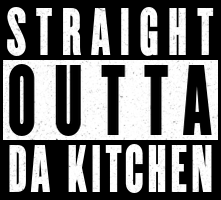
The Pickleball Rating System: How It Works and Why It Matters
Share
How It Works and Why It Matters
Pickleball has exploded in popularity, drawing players of all ages and skill levels to the courts. Whether you're a newcomer just picking up the paddle or a seasoned player seeking competitive play, understanding the rating system can help you better navigate the sport. But how are these ratings determined, and what do they mean for you? Let’s break it down.
What is a Pickleball Rating? Let me explain it
A pickleball rating is a numerical value that reflects a player's skill level. Ratings typically range from 1.0 to 5.5 or higher, with 1.0 being a complete beginner and 5.5+ representing an advanced or professional player. These ratings are used to group players into appropriate levels for recreational play, leagues, and tournaments.
How Are Ratings Determined?
There are two primary ways to determine your pickleball rating: self-assessment and official tournament results.
1. Self-Assessment Ratings
For recreational play or casual leagues, players often assign themselves a rating based on their own perception of their skill level. This is typically done using a guide that describes what a player at each level should be capable of. For example:
1.0 – 2.0: Beginner. The player is learning basic rules and techniques.
2.5 – 3.0: Intermediate. The player can hit a consistent serve, maintain a rally, and understand basic strategy.
3.5 – 4.0: Advanced intermediate. The player has developed reliable strokes, including dinks, volleys, and serves. They can control shot placement and execute basic strategies.
4.5 – 5.0: Advanced. The player has mastered all shots and can execute complex strategies, including third-shot drops and defensive lobs. They rarely make unforced errors.
5.5+: Professional. The player competes at the highest level in national or international tournaments.
2. Tournament Ratings (UTPR)
For players who compete in sanctioned tournaments, the USA Pickleball Tournament Player Rating (UTPR) is the official rating system used. Unlike self-assessment, these ratings are calculated based on actual tournament performance. Here’s how it works:
- Players accumulate points based on their win/loss record and the strength of their opponents.
- The more competitive the matches and higher the opponent's rating, the more significant the impact on your UTPR.
- UTPR is updated quarterly to reflect recent tournament performance.
How Are Pickleball Ratings Used?
1. Organizing Play
Pickleball ratings are essential for grouping players of similar skill levels to ensure fair and enjoyable competition. Many leagues and clubs use ratings to place players into divisions, ensuring that everyone gets to play matches that are both challenging and fun.
2. Tournaments
Tournaments are typically divided into skill levels based on ratings. This ensures a competitive balance and gives players the opportunity to compete against others at a similar level. The most common divisions are:
2.5 – 3.0: Beginner to lower intermediate
3.5 – 4.0: Intermediate to advanced intermediate
4.5 – 5.0+: Advanced and professional
Competing in the right division not only enhances your experience but also helps you improve by facing opponents of similar abilities.
3. Progress Tracking
Your rating is a great way to track your progress over time. As you practice, compete, and improve, your rating will reflect these advancements. This can be a huge motivator for players who want to see tangible results for their hard work.
4. Finding the Right Partners
In doubles play, finding a partner with a similar or complementary skill level is crucial for success. Your rating can help you and potential partners gauge how well you'll mesh on the court.
How to Improve Your Pickleball Rating
If you're looking to move up the ranks and improve your rating, here are a few key tips:
Practice Consistently: Skill improvement takes time, so regular practice is essential.
Play Competitive Matches: Challenge yourself by playing against higher-rated players. This helps you develop your game and pushes you to adapt.
Focus on Strategy: Pickleball isn't just about power; it's about strategy. Work on shot placement, court positioning, and mental aspects of the game.
Compete in Tournaments: If you want an official UTPR rating, you'll need to compete in sanctioned tournaments and earn your stripes through match results.
Conclusion
The rating system provides a framework for fair and enjoyable play across all skill levels. Whether you’re self-assessing for recreational play or aiming for a higher UTPR in competitive tournaments, your rating helps you find your place in the pickleball community. By understanding how ratings are determined and used, you can better navigate the sport and enjoy the journey as you improve your game.
Check out our pickleball-themed stickers, women's apparel and men's apparel.
